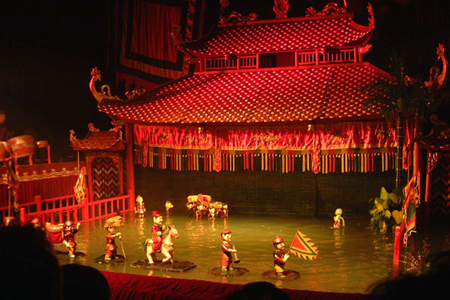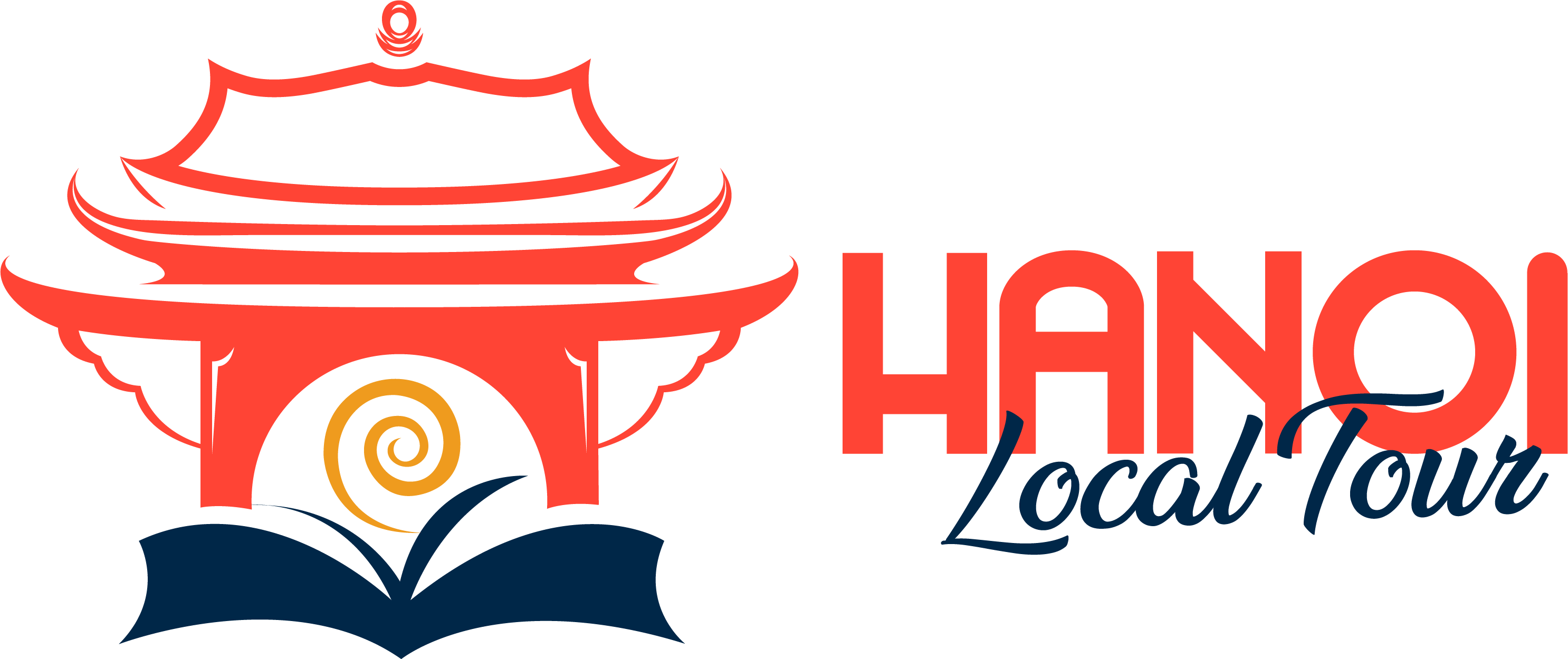The capital of Hanoi is always captivating by splendid blend of the old and the new, east and west, a clear window to the country’s colorful and extensive past. The elegant and ponderous city steals tourists’ hearts on the first visit by its unique Vietnamese delicacy and beauty from historical and cultural places with Vietnamese traditional style temples, ancient citadels, imposing colonial architecture. Top 10 most popular attractions in Hanoi listed below encapsulate the breadth of timeless Vietnamese historical and cultural values.
Temple of Literature
The well-preserved architecture in Vietnam with nearly 1000 years existence and renovation is elected in Ly Dynasty by King Ly Thanh Tong. The Temple of Literature is dedicated to Confucius and honors Vietnam’s finest scholars, while the National University found in 1076 by Ly Nhan Tong is to educate and train talented men for the country. The temple is more a garden than anything with its series of five courtyards, full of old trees; each of these has each own unique character, each one a dedication to the key aspect of literature and learning. This quiet sanctuary is a good respite from the busy traffic and bustling crowd of Hanoi. Maybe, the most impressive one is the collection of 82 stone steal which rest upon large stone tortoise in memory of scholars who got the highest ranks in imperial exams.
Wander around the breathtaking garden which has a huge number of ancient trees, being a serene place for relaxing; get a glimpse of ancient Vietnamese architectures and educational culture in Vietnam; admire statue of Confucius and a house of ceremonies; snap photos in distinguished court yards.
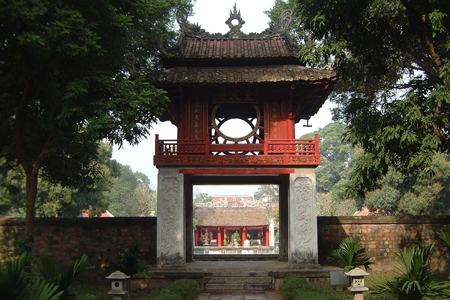
Ho Chi Minh Mausoleum
To the west of Old Quarter, where most Western tourists to Hanoi go, a large area of park, and grounds and buildings dedicated to Ho Chi Minh’s Mausoleum, ripe with hundreds of visitors filling through when it is open in the morning. The Mausoleum, a pillared, granite and stone-faced building, reminiscent of Lenin's Mausoleum in Moscow Large, contains Ho Chi Minh’s well-preserved corpse.
Get a first-hand look at unique architecture of the mausoleum with the roof evoking either a traditional communal house or a lotus flower, a grassy area in front of the Mausoleum which is a good place to take a photo with the mausoleum as a background. Particularly, go inside the mausoleum; adopt a slow but steady pace as you witness Ho’s body set deep in the bowels of the building in a glass sarcophagus. Quiet lines of Vietnamese and other visitors come here to see and show their deep respect to the hero of nation.
If lucky, tourists can admire the changing of the guard outside Ho’s mausoleum – the pomp and ceremony displayed here rivals the British equivalent at Buckingham Palace.
Notice that wear modest dresses (no shorts, sleeveless shirts and miniskirts) and maintain a respectful demeanor at all times; no talking. Deposit packs, cameras and phones before entering.
Ho Chi Minh Museum
Beside the Mausoleum, Ho Chi Minh Museum is probably one of the two places most visited by foreign tourists. On a trip to see the mausoleum, people can also see the museum and palace grounds too. The large beautiful concrete Soviet-style Ho Chi Minh is a colossal monument dedicated to the Ho Chi Minh’s life (1890-1969) - the great father of Vietnam and philosophy, 10th century history related to Vietnam. The museum’s exhibits are a collection of fascinating photographs and documents, artistic and impressionistic displays on the third floor.
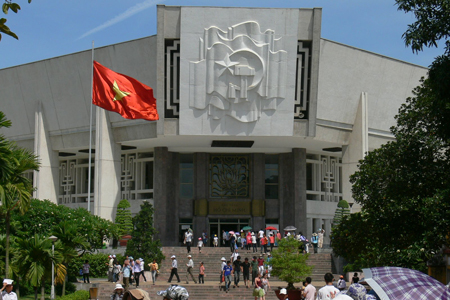
Imperial Citadel of Thang Long
Hanoi's Imperial Citadel, one of the important historical places in Vietnam, and has been listed in the World Heritage Sites was the hub of Vietnamese military power for over 1000 years. It includes many relics in ancient Hanoi Citadel and an interesting archaeological area with bronze coins, ceramics and pottery from ancient time. The leafy grounds are also an easygoing and quiet antidote to Hanoi's bustle.
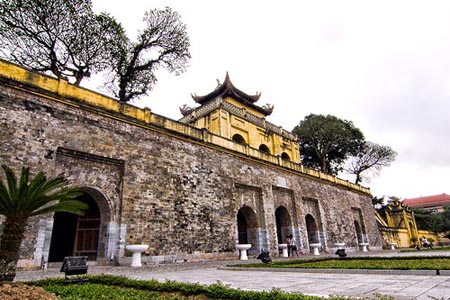
Vietnam Museum of Ethnology
Located way out in the suburbs (Cau Giay), far from the city centre about 8 km, the Museum of Ethnology occupies a modern structure, the terrific collections and displays of characteristics, cultural features of all ethnic groups in the country. Captivating tourists by the charming blend of traditional and modern structures of indoor exhibition and examples of traditional village houses such as a Tay stilt house, impressive Bahnar communial structure, don’t miss the soaring, thatched Giarai tomb. Walk through the museum, gain insights into the good collection featuring well-presented tribal art, artifacts and everyday objects gathered from 54 ethnic groups across the country; displays are well labeled in Vietnamese, French and English, Browse through endless of alleys of shops selling books, beautiful postcards, and arts and crafts from ethnic communities.
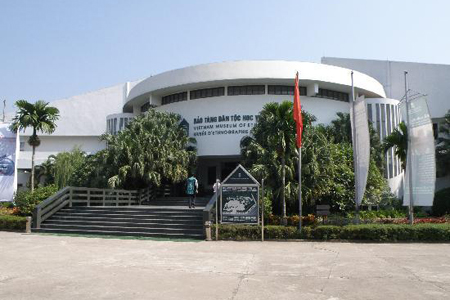
Hanoi Old Quarter
What makes Hanoi become unique and more charming is Old Quarter - the soul of Hanoi. Streets in Old Quarter have been famous for commercial ones in Hanoi for centuries. The fuel-filled crammed corners of Asia with wires overhead, clattering and chattering all around amid a cocktail of scooters, food stalls, chic and cool colonial streets teaming hotels and tour companies around, old French and Vietnamese architecture, alley of the shops, all bring Hanoi a different beauty that distinguishes from other places in Vietnam and in the world. Strolling in Old Quarter to enjoy most delicious Vietnam traditional foods or buy for yourself interesting souvenirs in small shops will become one of the most enjoyable experiences in lifetime.
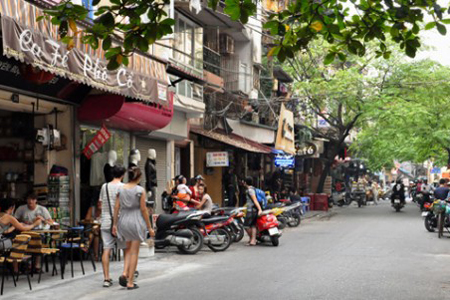
Hoan Kiem Lake and Ngoc Son Temple
Hoan Kiem Lake - the legendary centre and the heart of Hanoi. Its name is derived from the famous legend in Vietnam related to returning a magical sword of the famous and victorious General Tran Hung Dao. Hoan Kiem Lake is the great opt for those who wish a pleasant excursion to get a first-hand experience of Vietnam’s history, and understand the monuments and temples around it better, sight-see and exercise. Walking around Hoan Kiem Lake with many green trees and shaded spots, you will see a new life of Hanoi, differing from its bustle and hustle every day. You will feel a peaceful life when seeing senior citizen groups practicing t’ai chi, or chess in the morning. Ngoc Son Temple (Ngoc Son means Jade Mountain) sitting on an island in Hoan Kiem Lake, was constructed to honor and worship Tran Hung Dao and some scholars such as Van Xuong or La To. The island and the temple are reached by a scarlet bridge named The Huc. The shrine called Turtle Tower, on an islet, near the southern end was built in the 19th century reveals classic French colonial style. In the mornings the sunrises over the lake near the Turtle Tower (seen from the southwest side of the lake) are about the best. Sit on the benches at the corner of the lake and watch the sunrise.
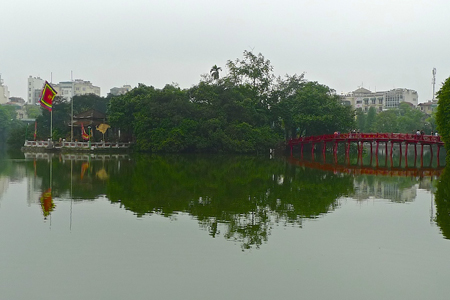
Duong Lam village
An excursion to Duong Lam, enjoy haven of peace and serenity away from the bustle and hustle of the city , trace back the origin of Vietnam’s culture and Vietnam’s traditions. Drive about over 60 km from centre of Hanoi, explore architecture of ancient houses dating back to 200 years ago characterized by old laterite brick. Wander along its narrow alleyways, visit temples dedicated to the two kings King Ngo Quyen and King Phung Hung, and most interesting of all, chat with locals living in the ancient houses.
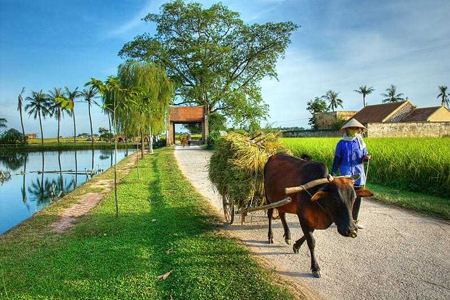
Bat Trang Village
Bat Trang - ceramic village is 20 km far from the centre of Hanoi in the left bank of the Red River. Thus, you properly travel to Bat Bat Trang - ceramic village is 20 km far from the centre of Hanoi in the left bank of the Red River. Thus, you properly travel to Bat Trang by a motorbike or by bus. From past to now, Bat Trang has been well-known as the village with the most famous and high qualified ceramic products in the country. Go around the village, witness a number of ceramic workshops, poke around down the lanes and behind the shops to find the kilns, marvel at unique walls using to dry charcoal and simple old houses. Stroll across the bank to find for yourself a unique and amazing vehicle which is “buffalo cart” to help you to discover the village.
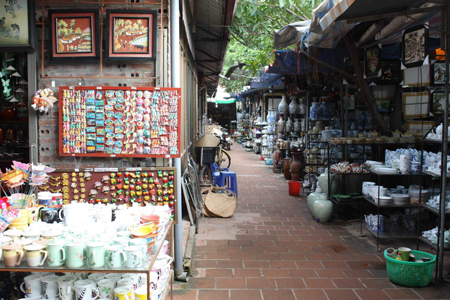
Thang Long Water Puppet Theater
If you are passionate to Vietnamese art forms, wish to soak up the history of old Hanoi, then go to the Thang Long Water Puppet Theatre in Vietnam, the home of a thousand-year-old tradition and witness mesmerizing water puppet performances. It has existed for centuries with the traditional art form in the North Vietnam. Originally, water puppet was just shown in small villages by villagers; however, it quickly becomes famous on stages all over the world, and the world-class Vietnamese art form. Listen authentic Vietnamese operatic songs, accompanied by orchestra playing traditional music using drums, wooden bells, horns, bamboo flutes and cymbals, marvel at water puppet shows recounting Vietnamese legends like Legend of the Restored Sword of King Le or folk tales, taking the audience on a journey of ancient village life, agricultural harvests and dances of mythical creatures.
